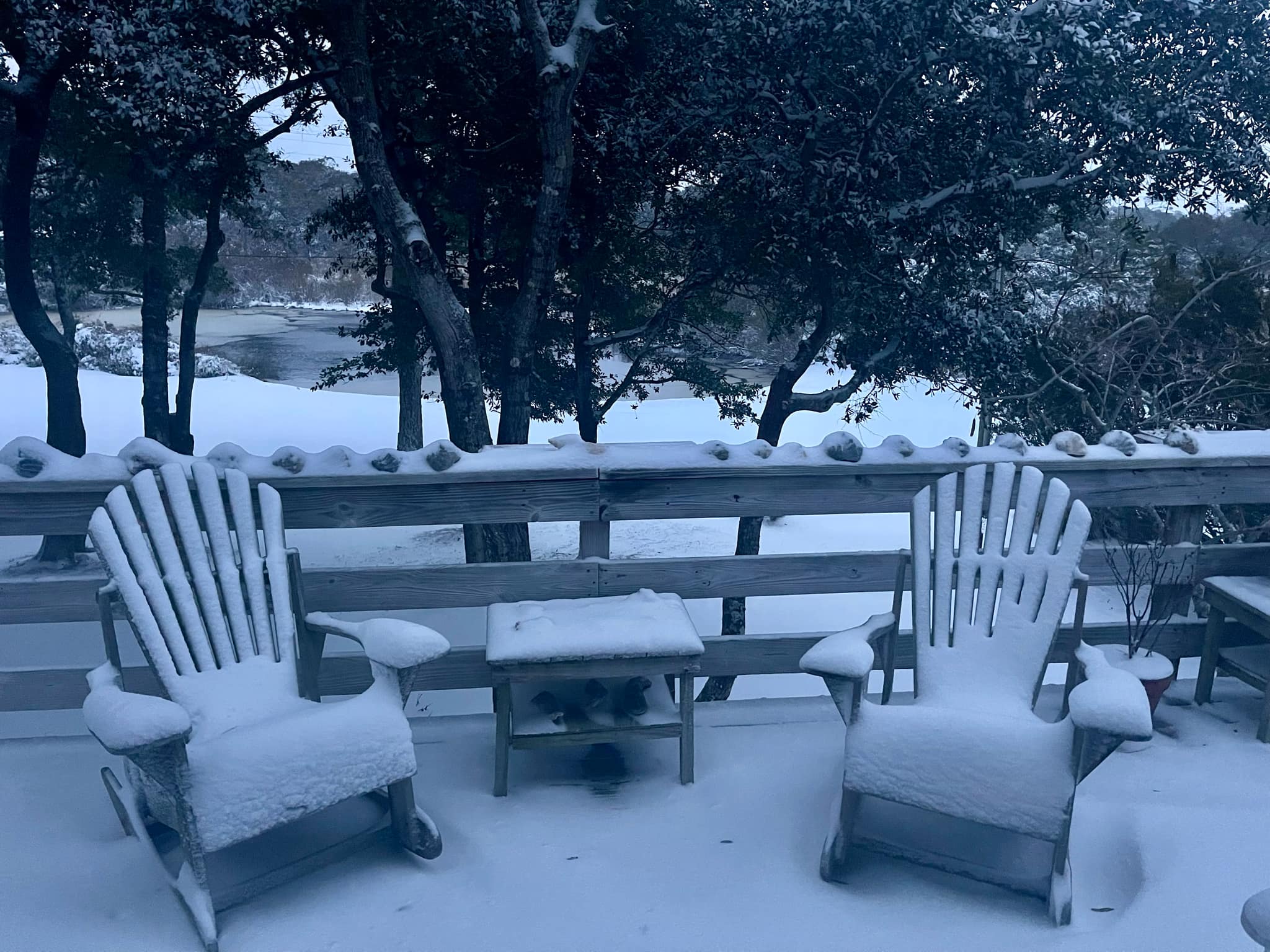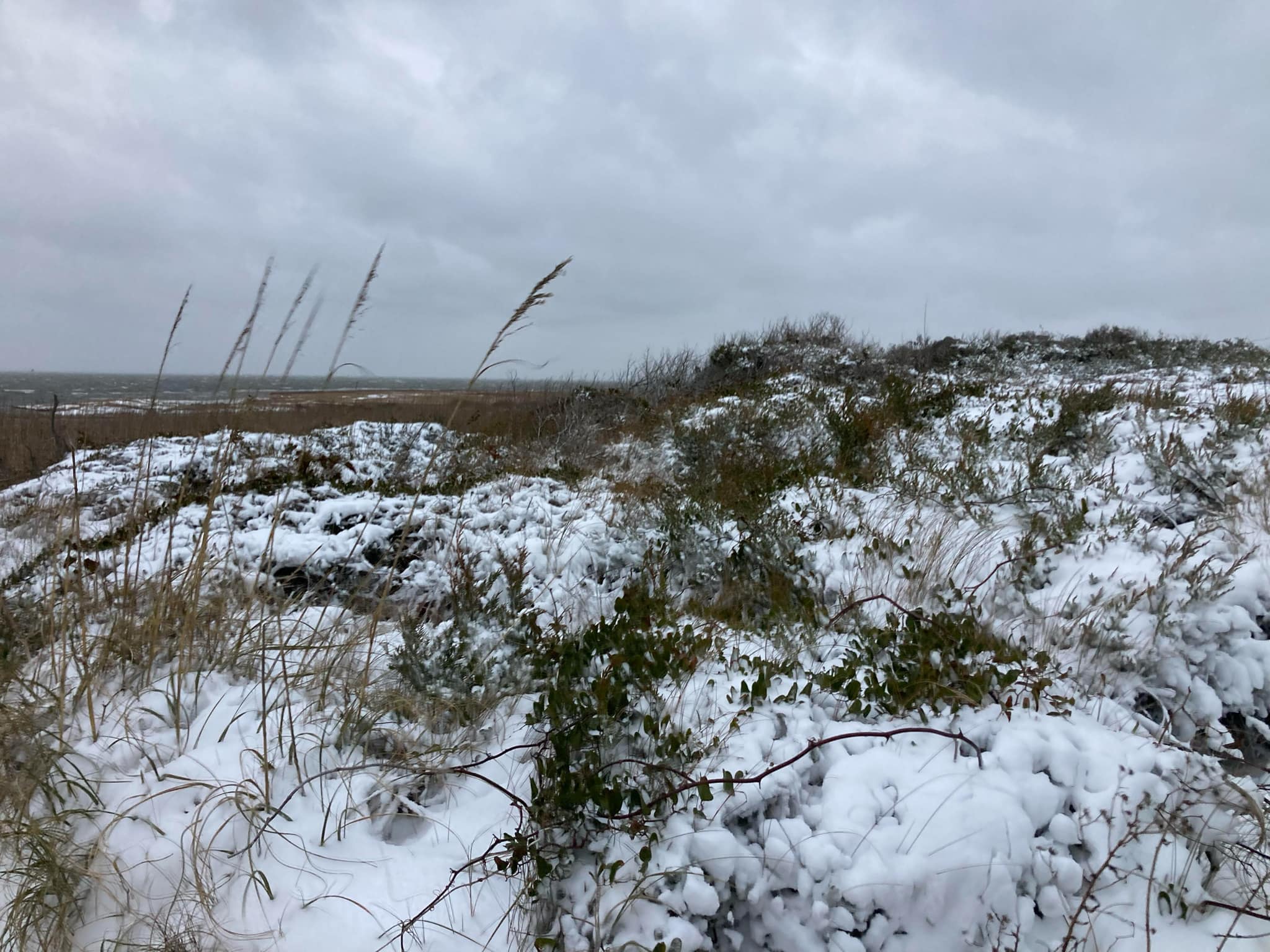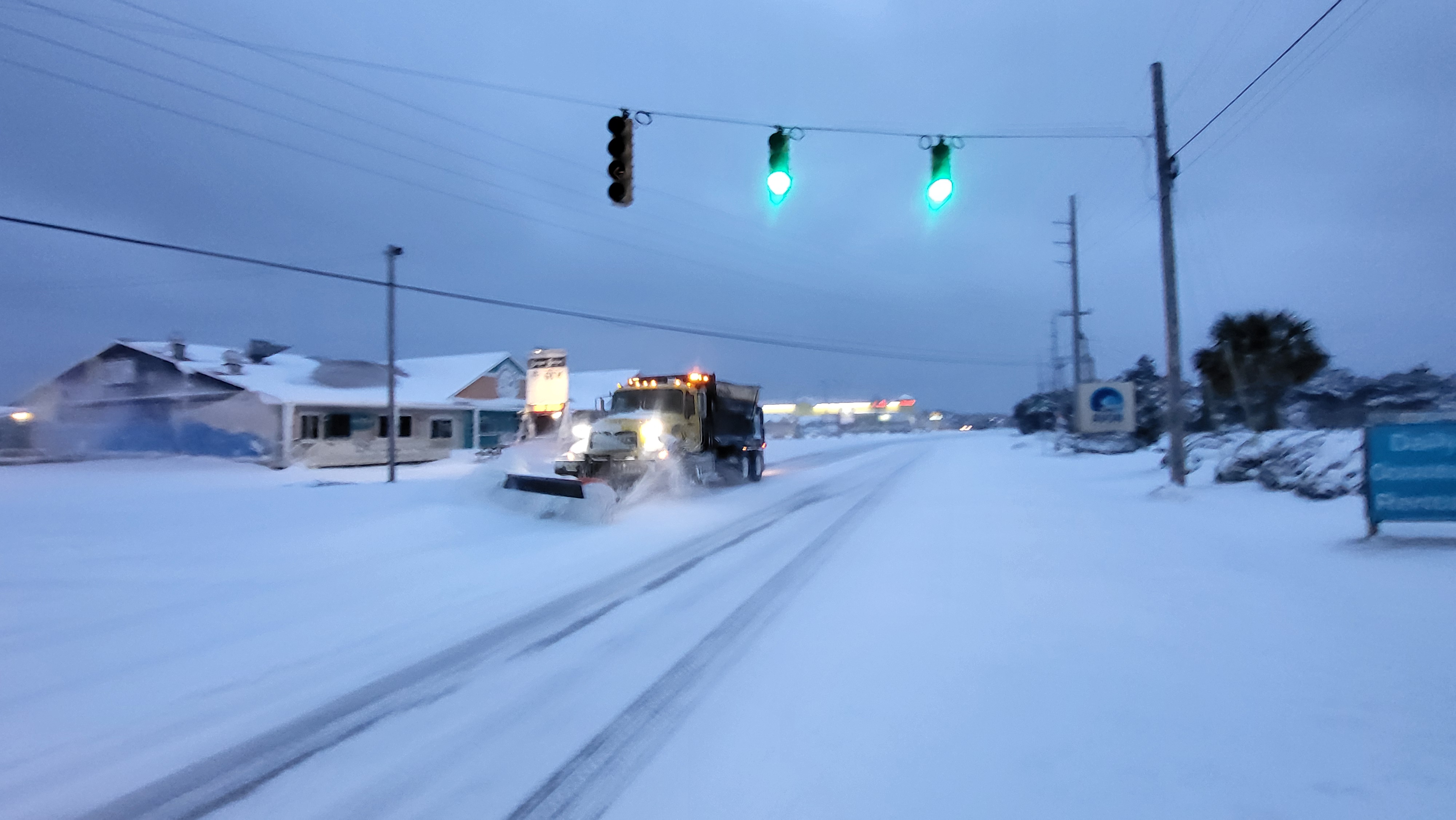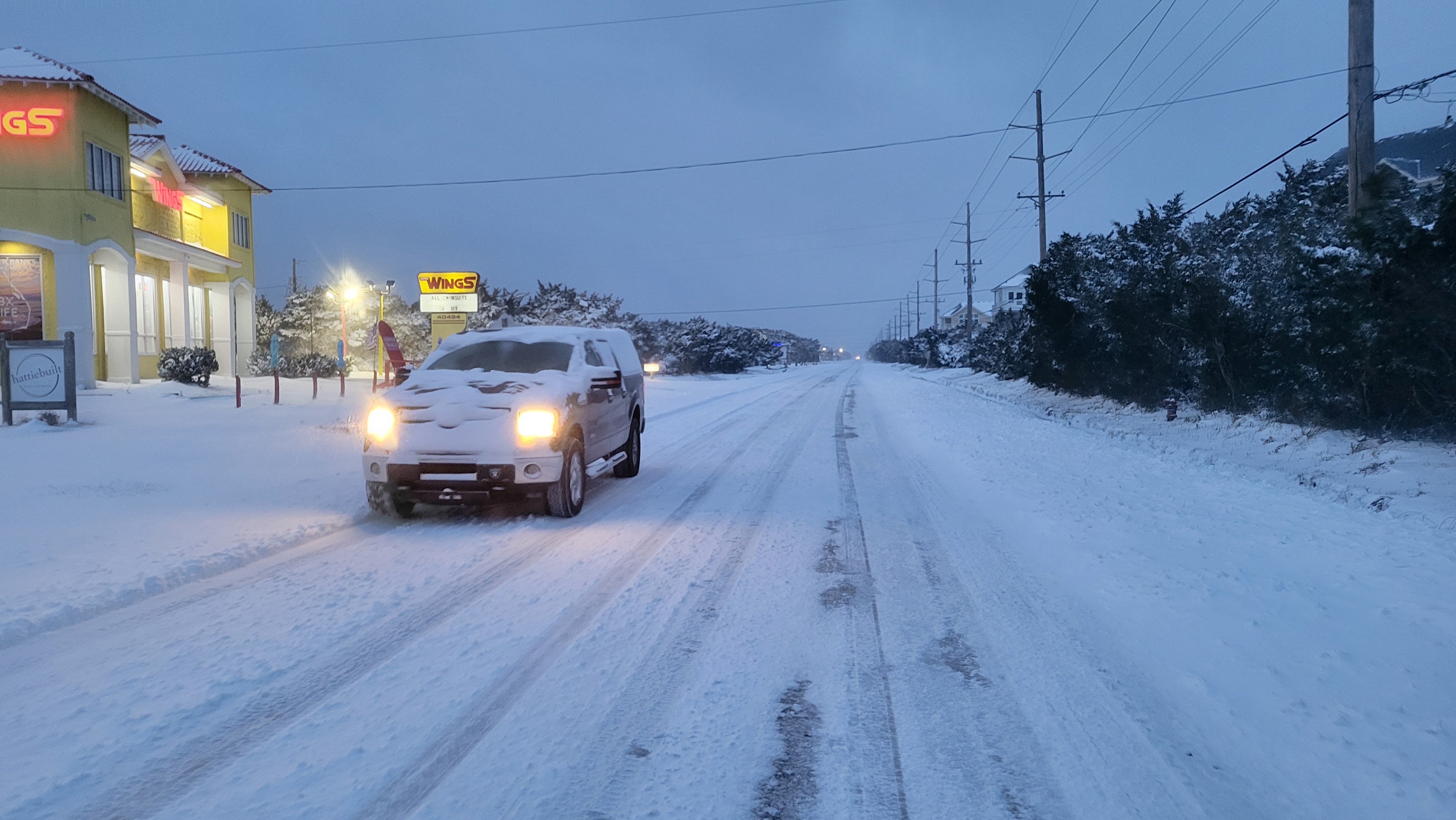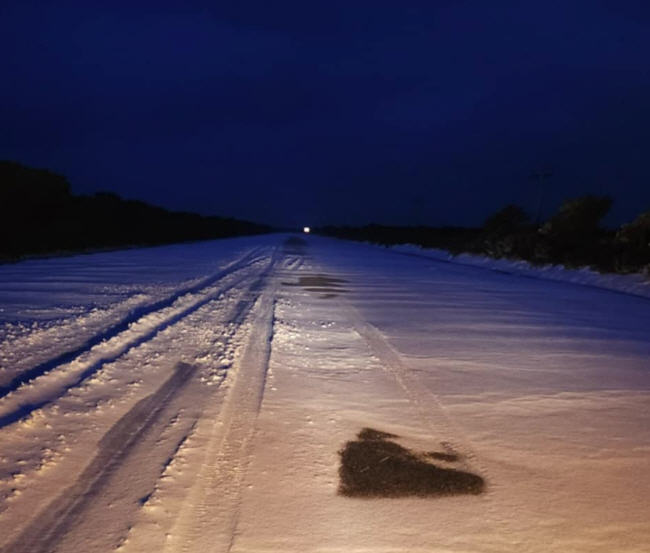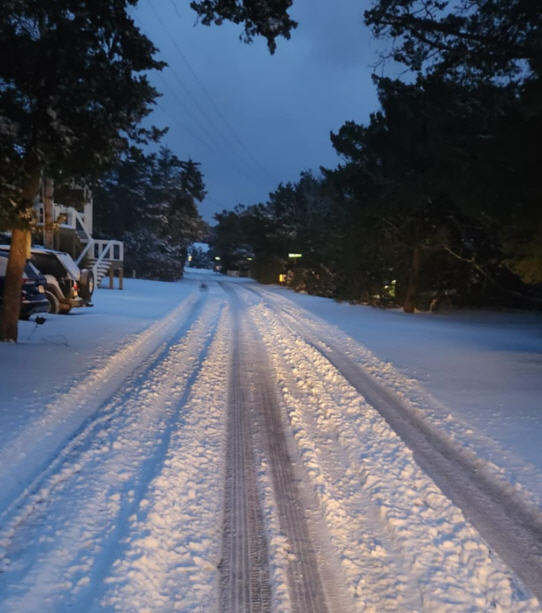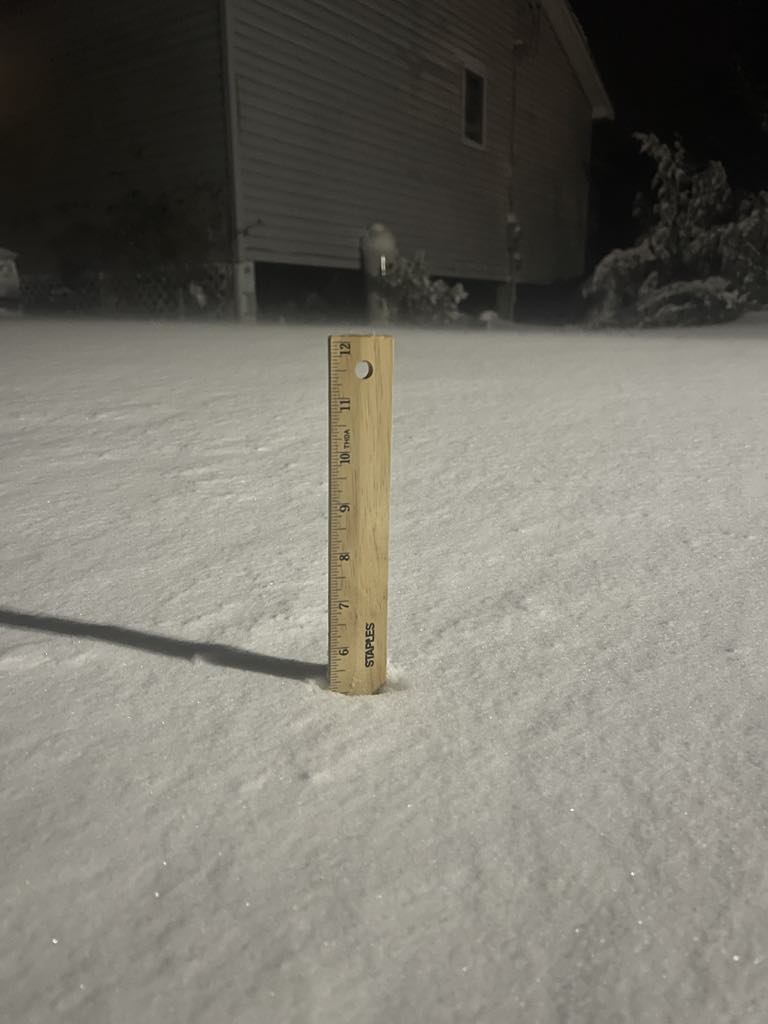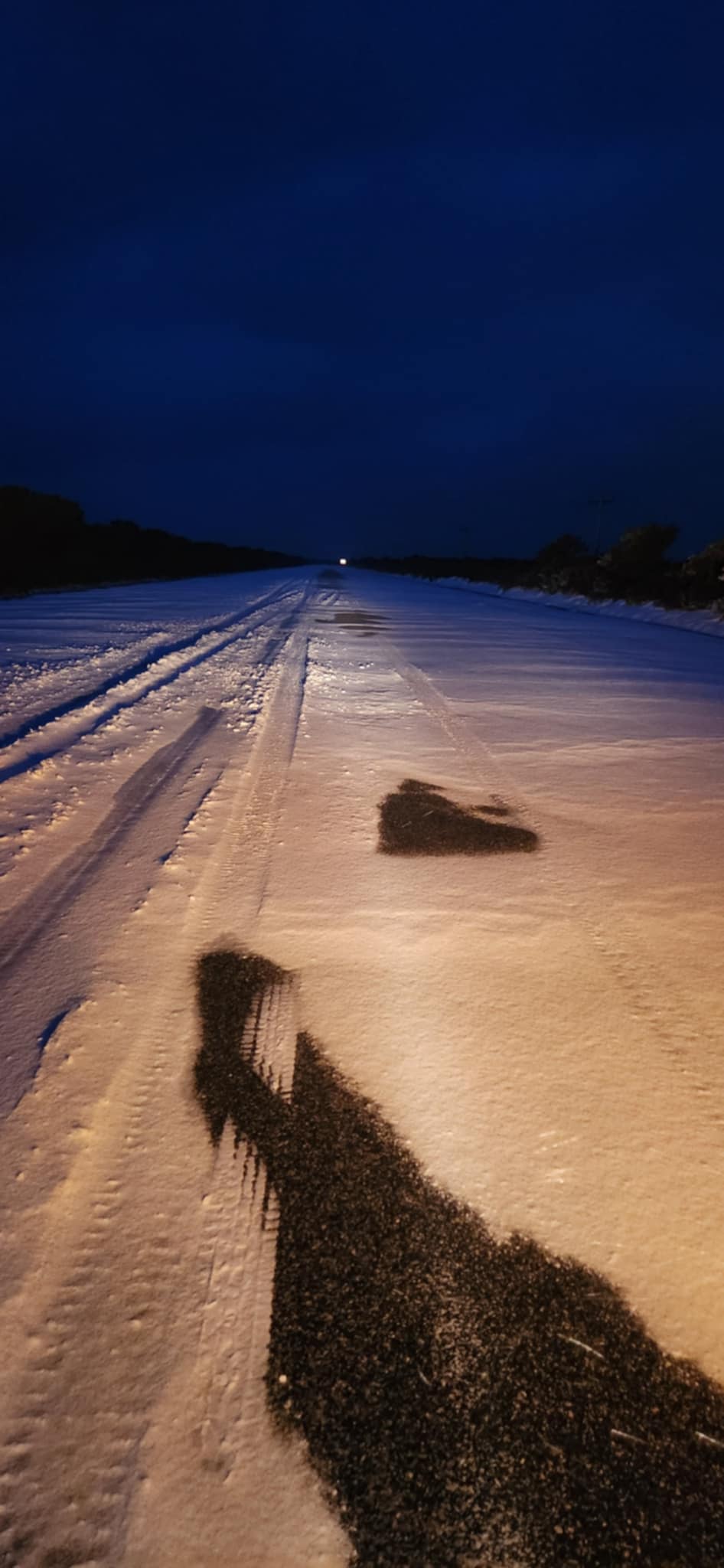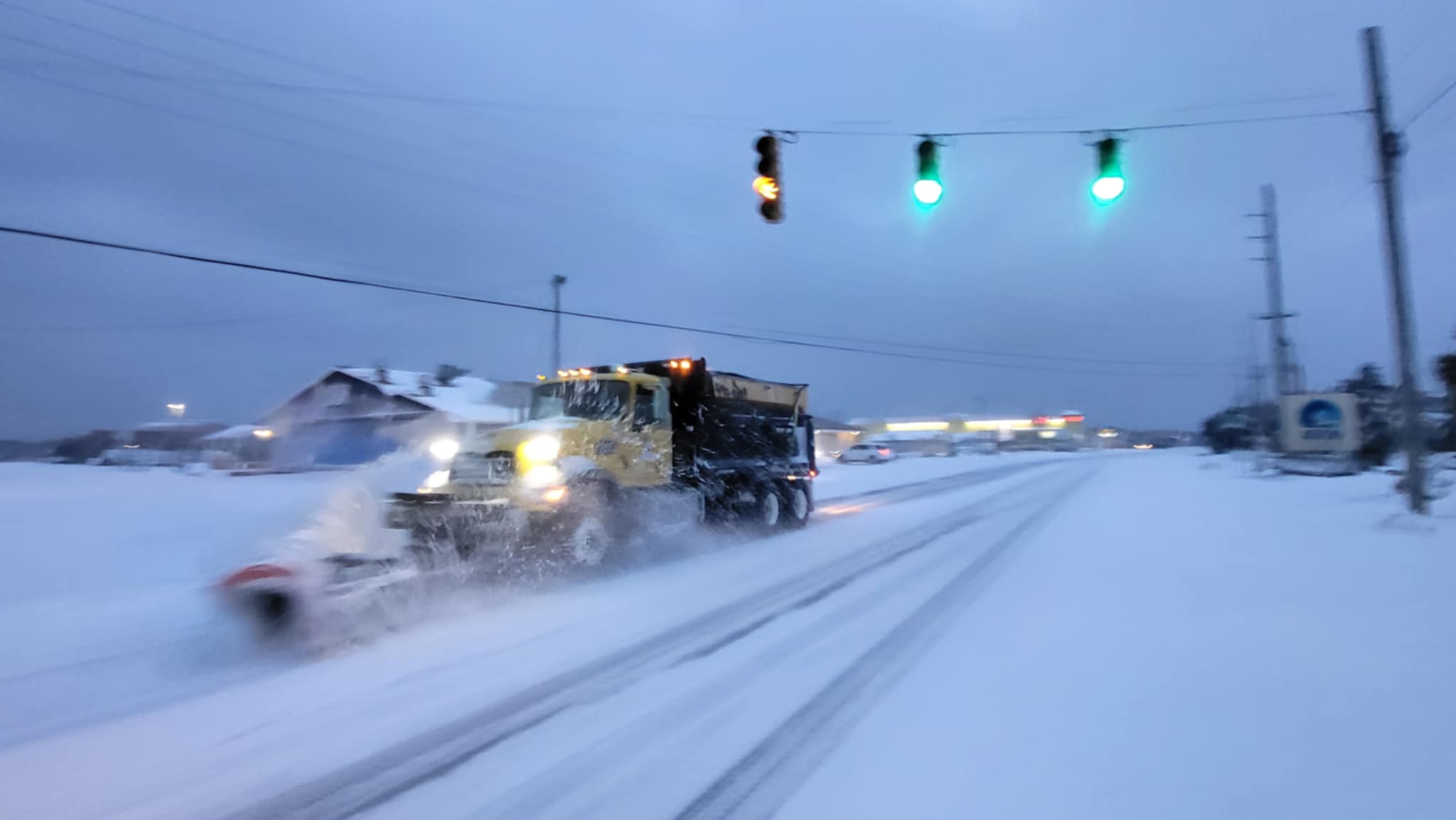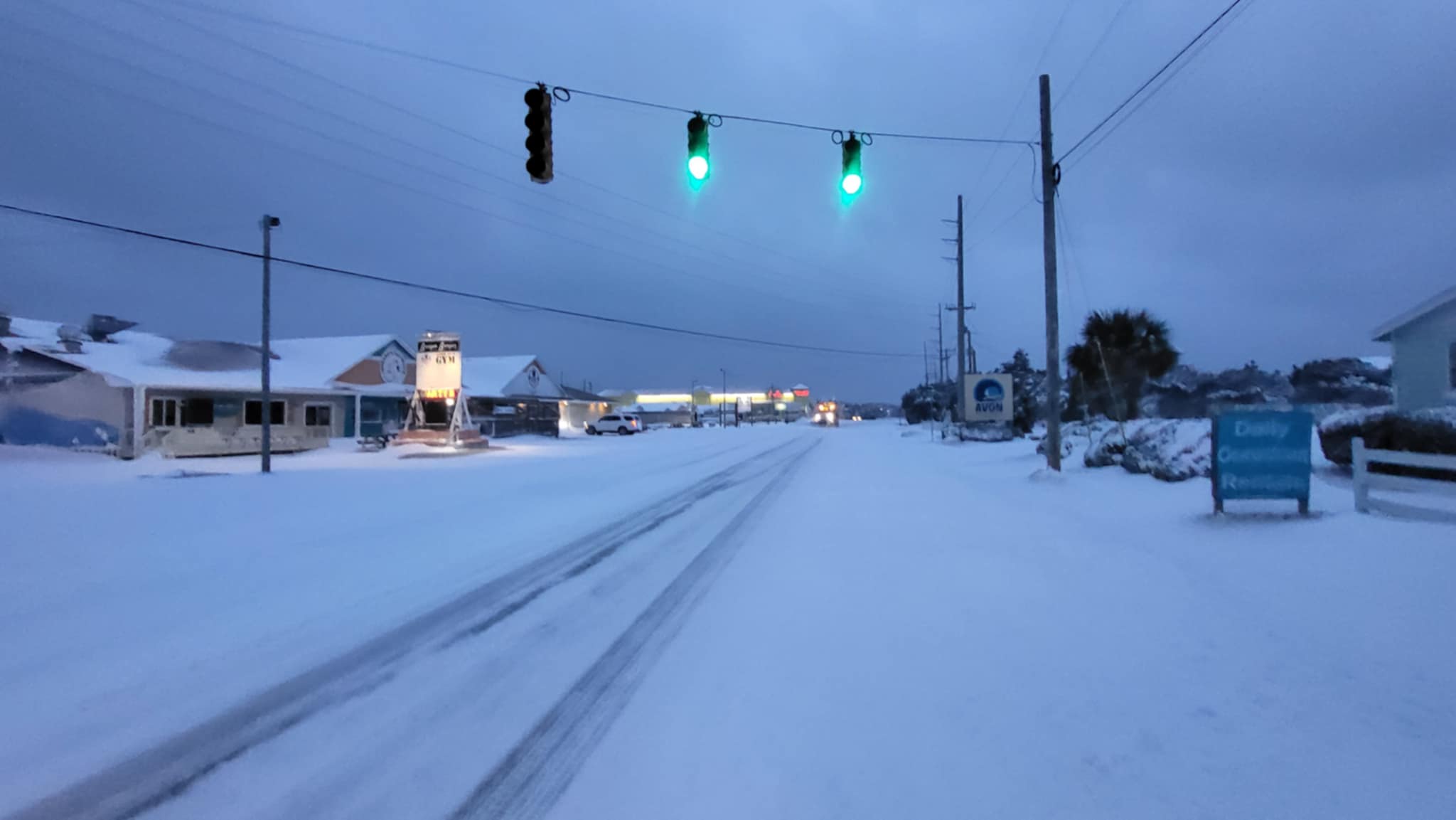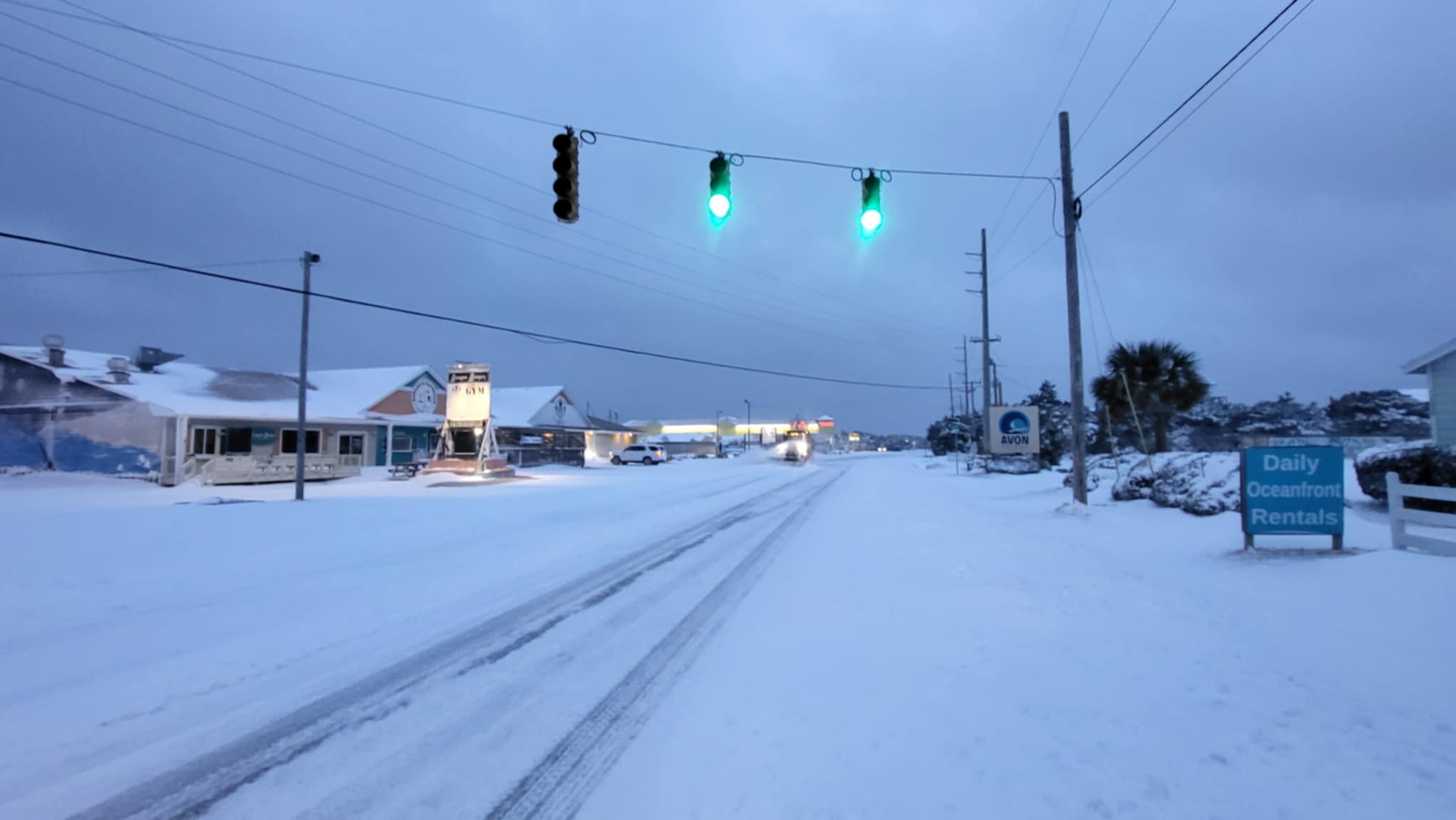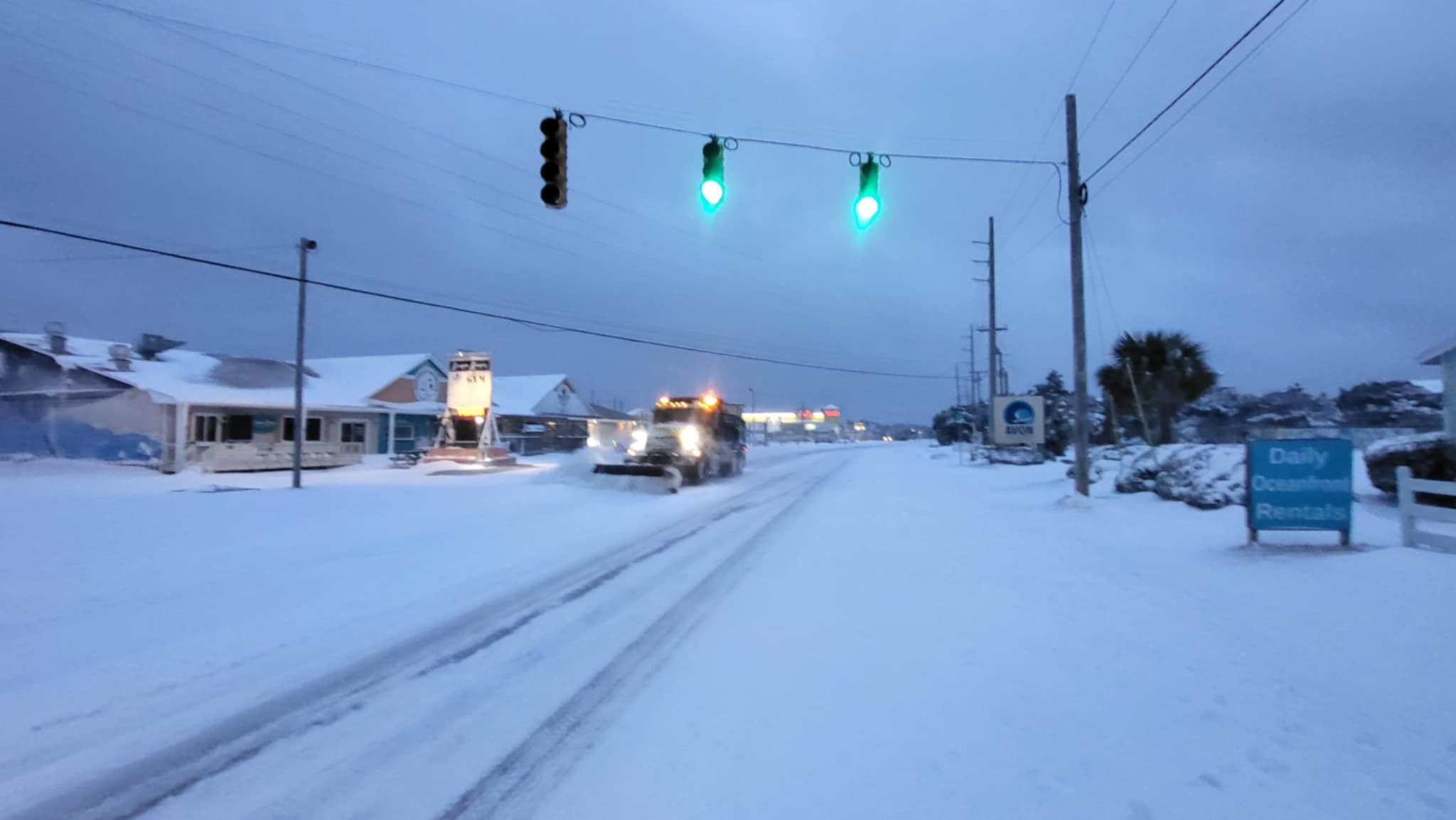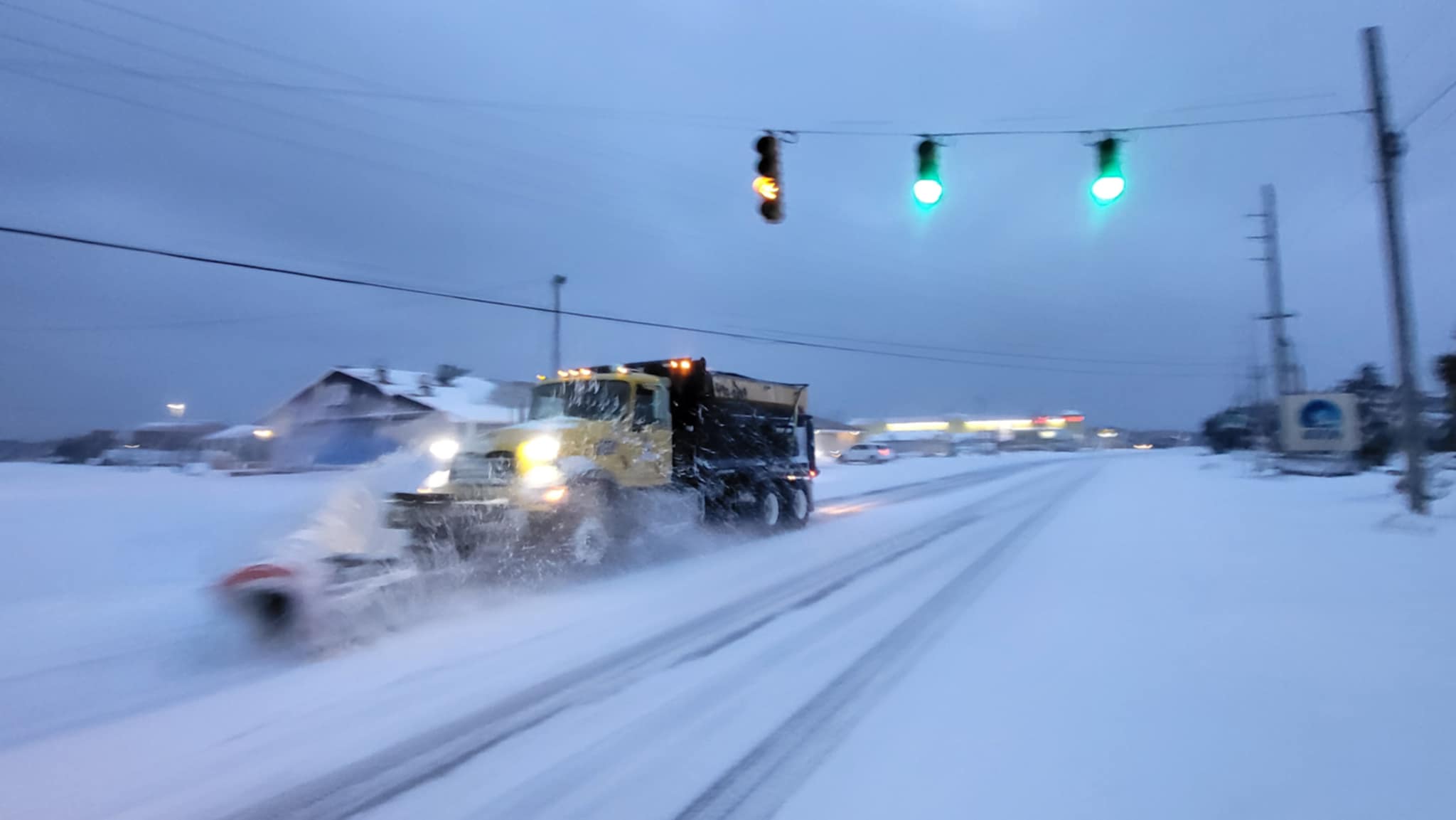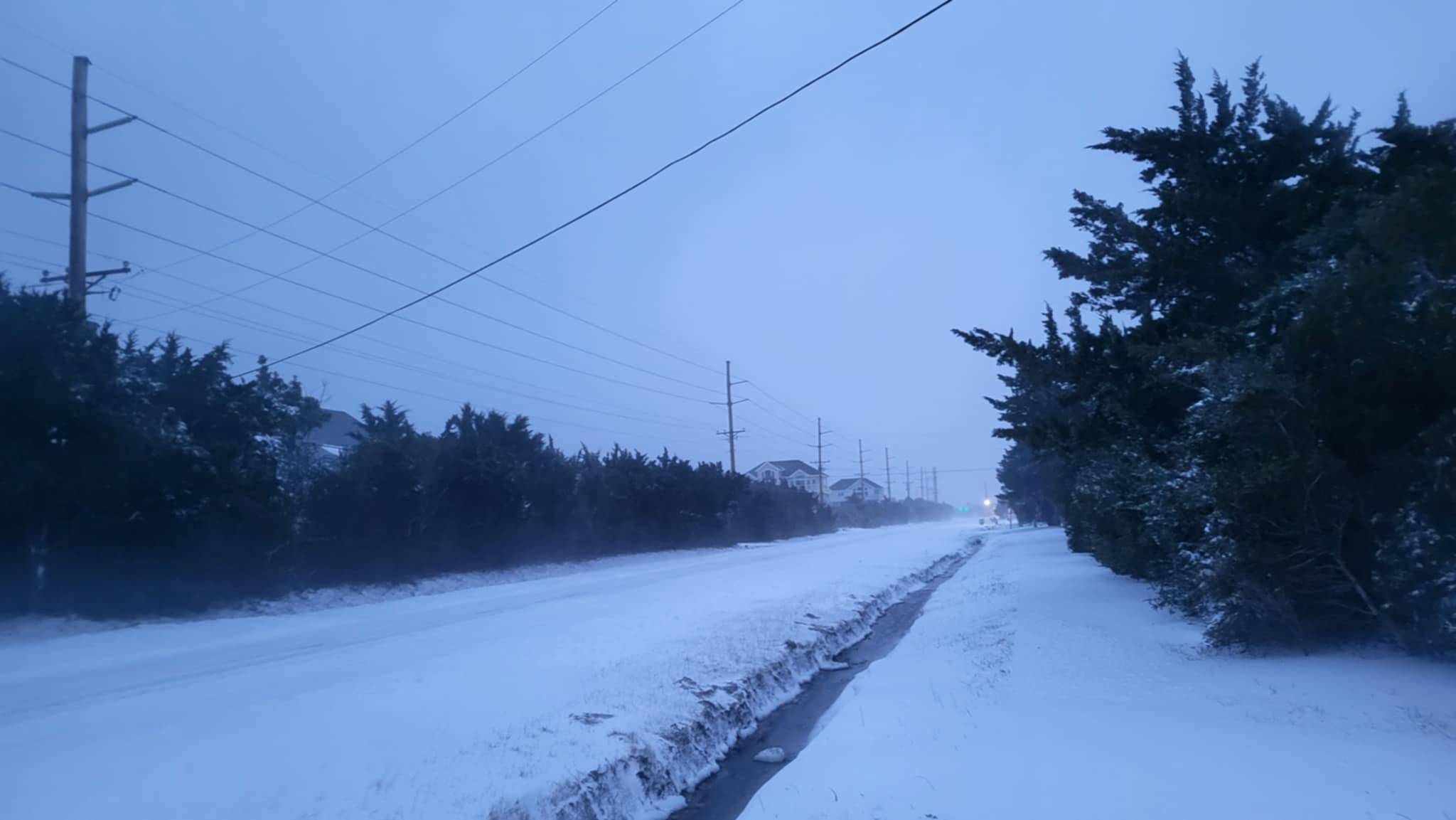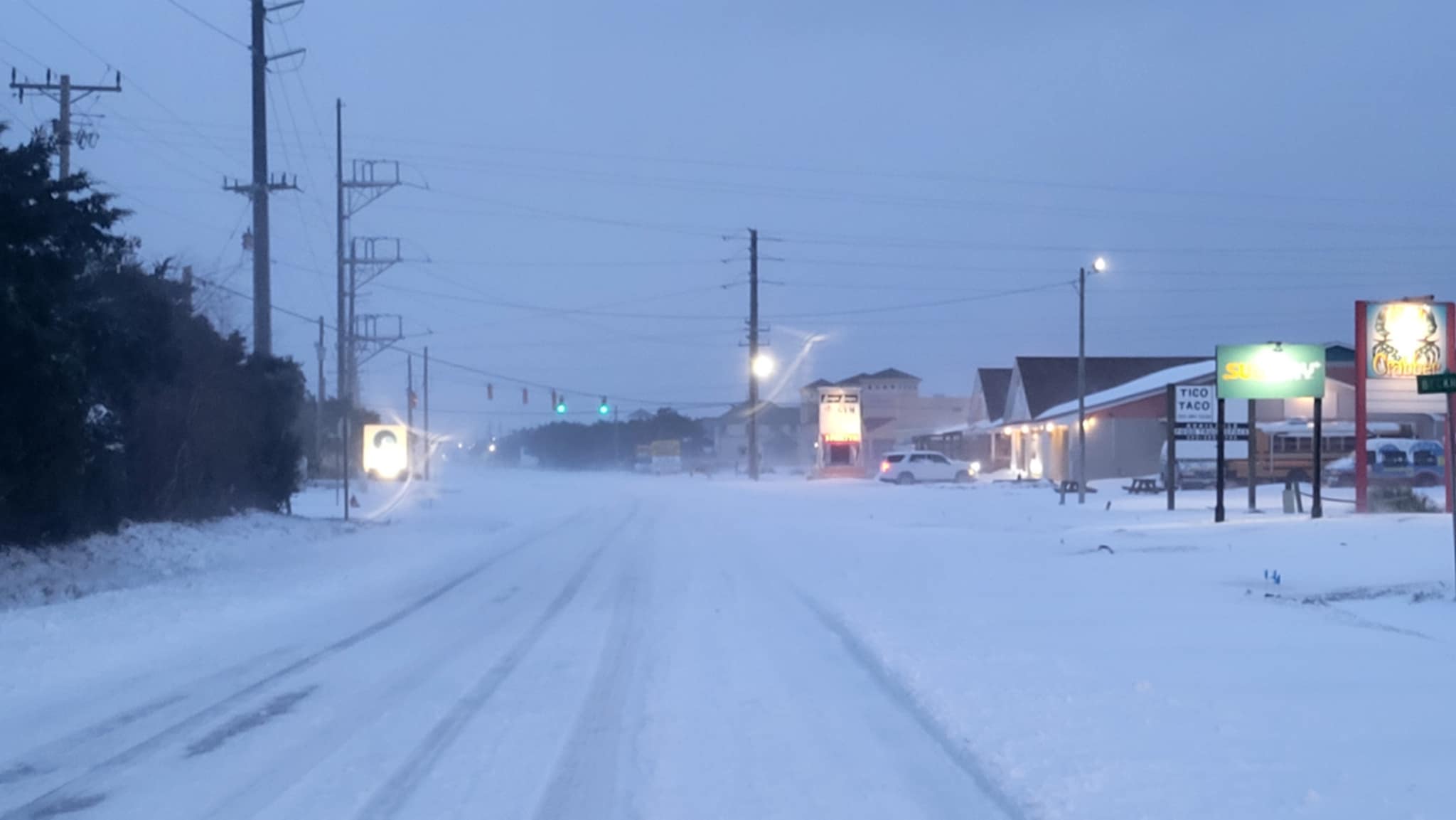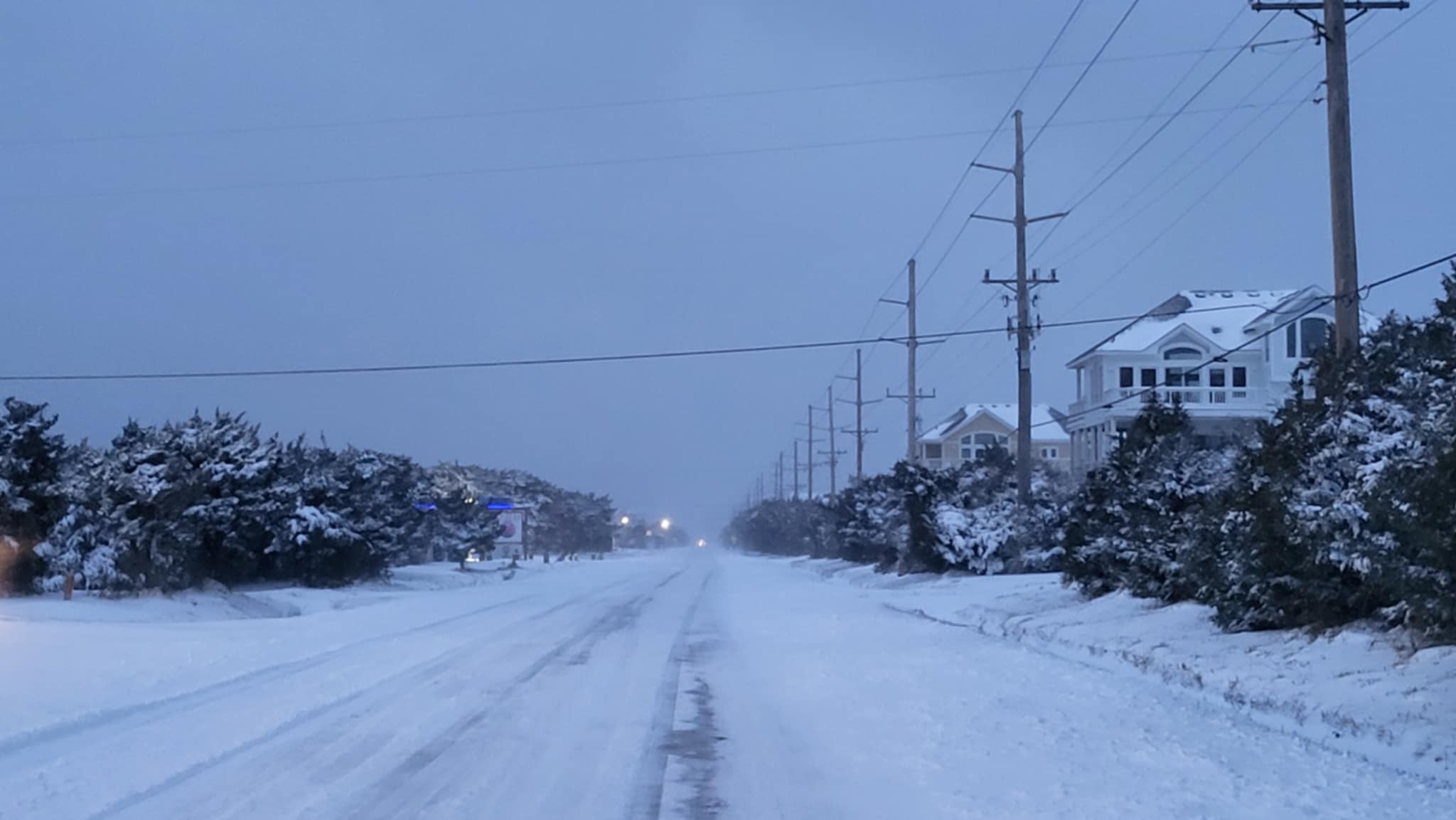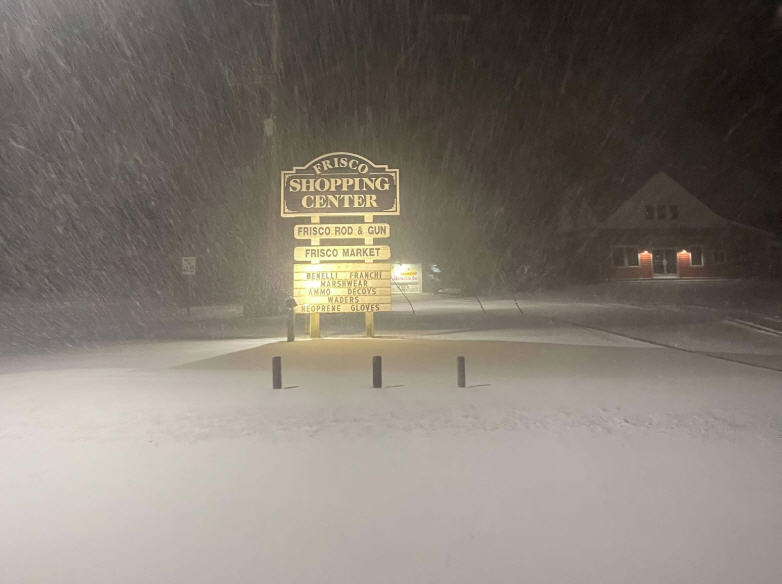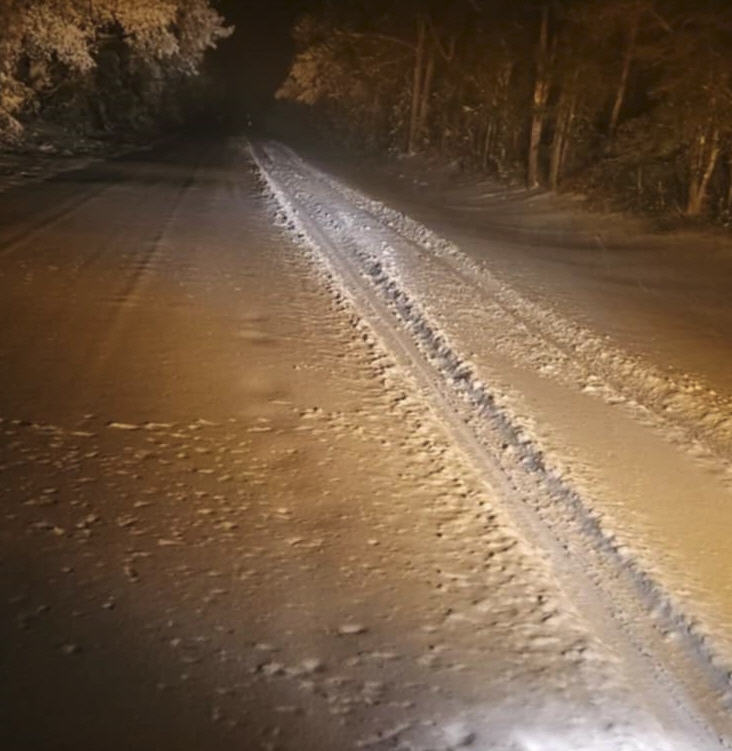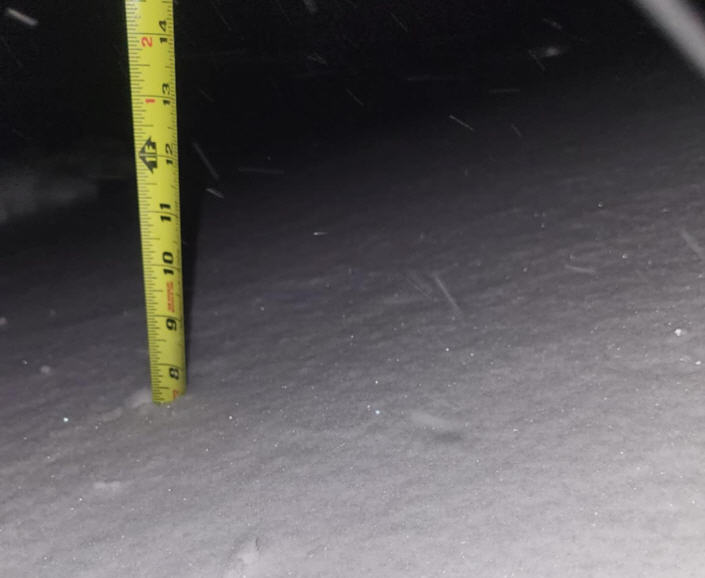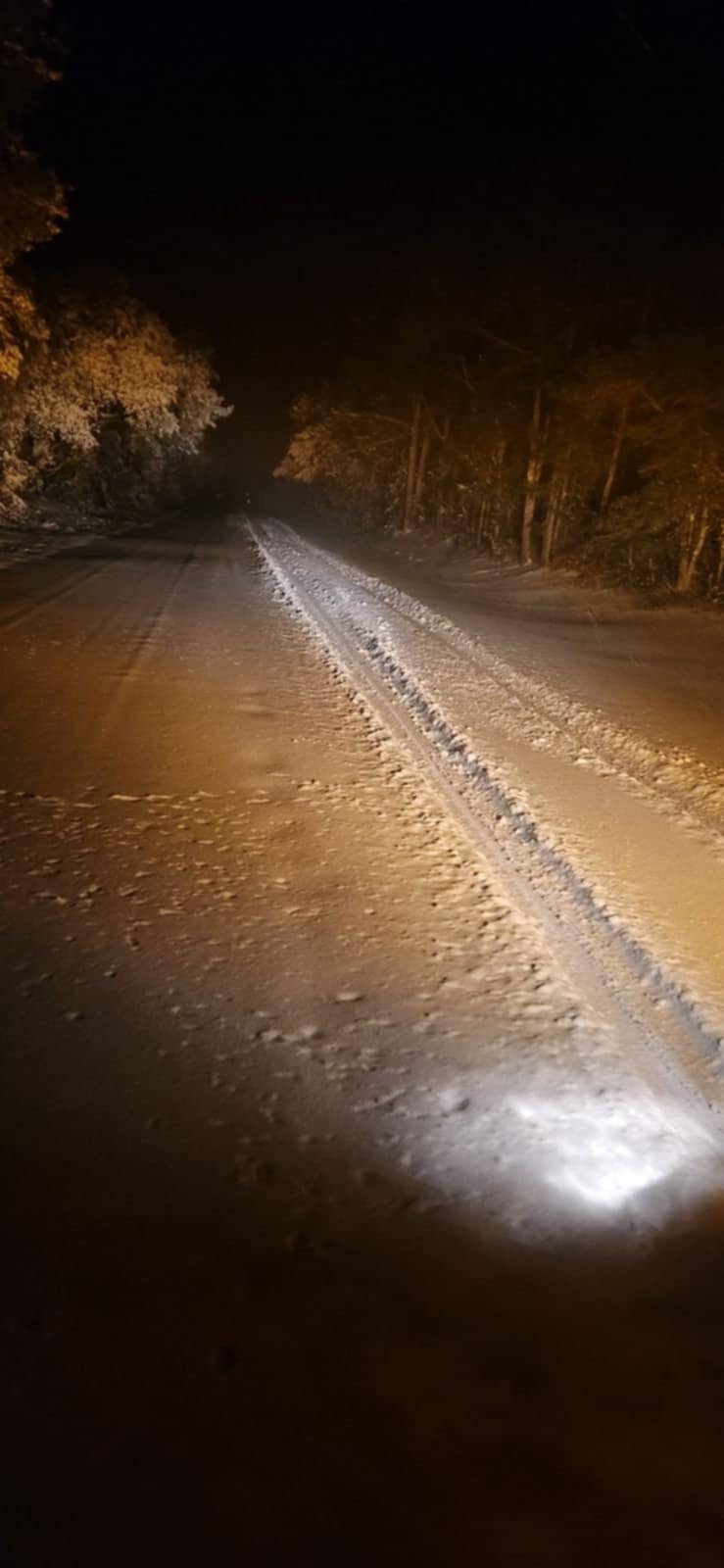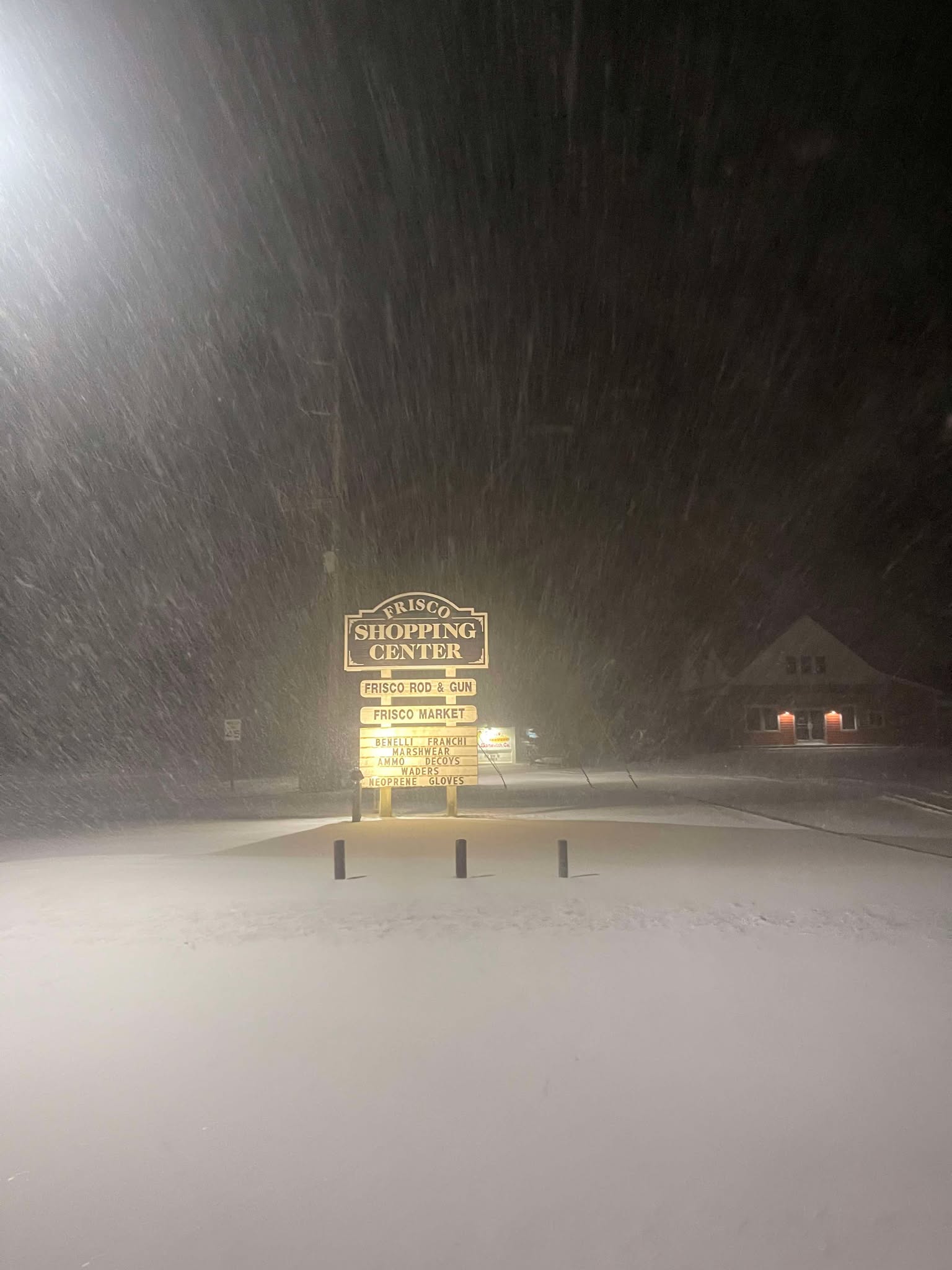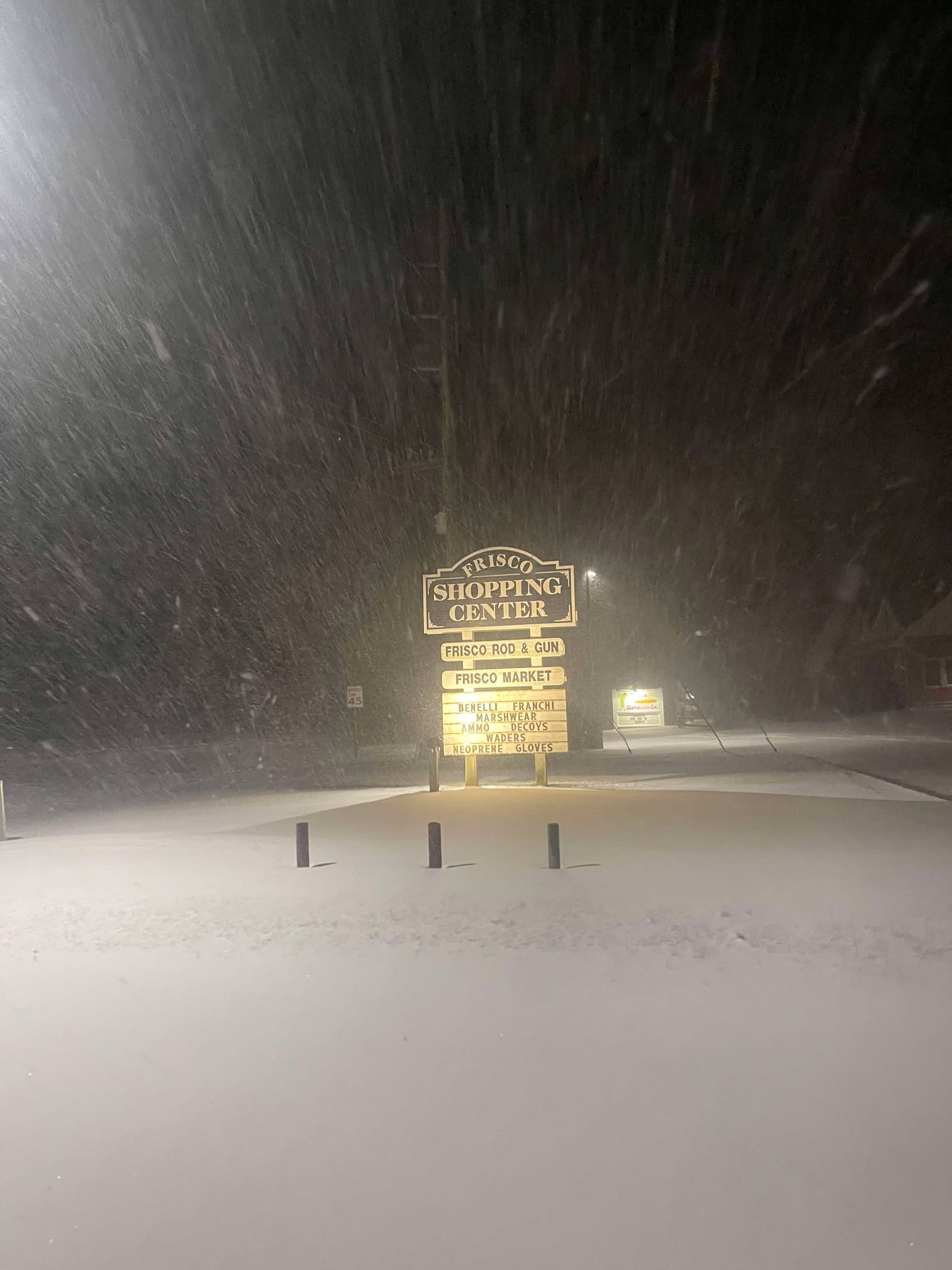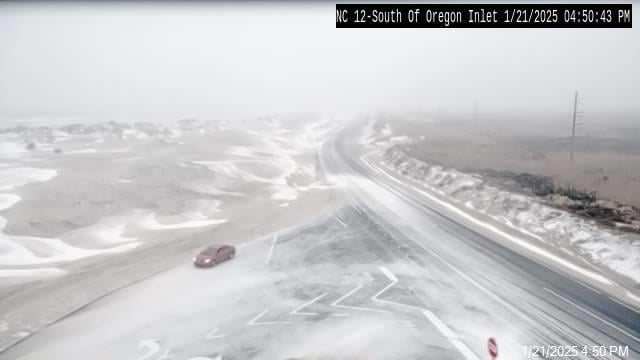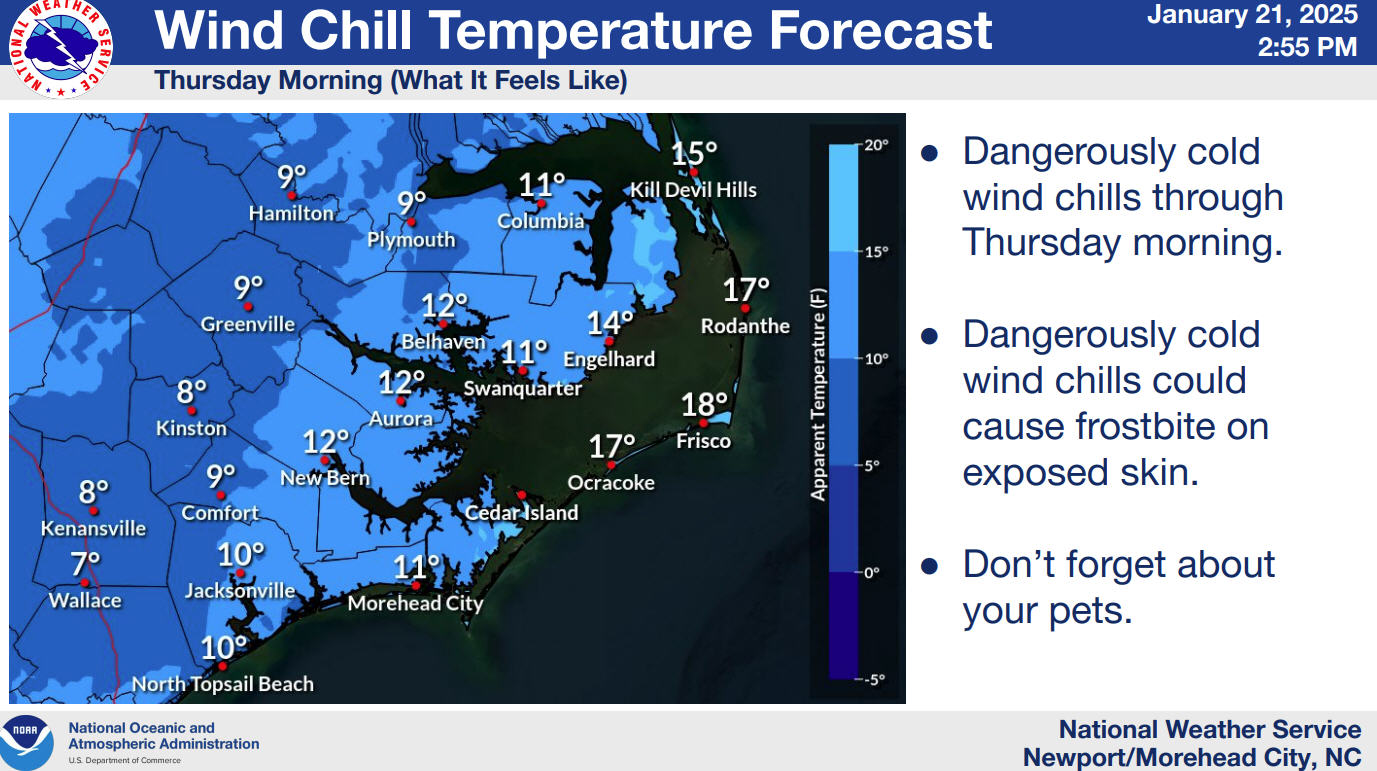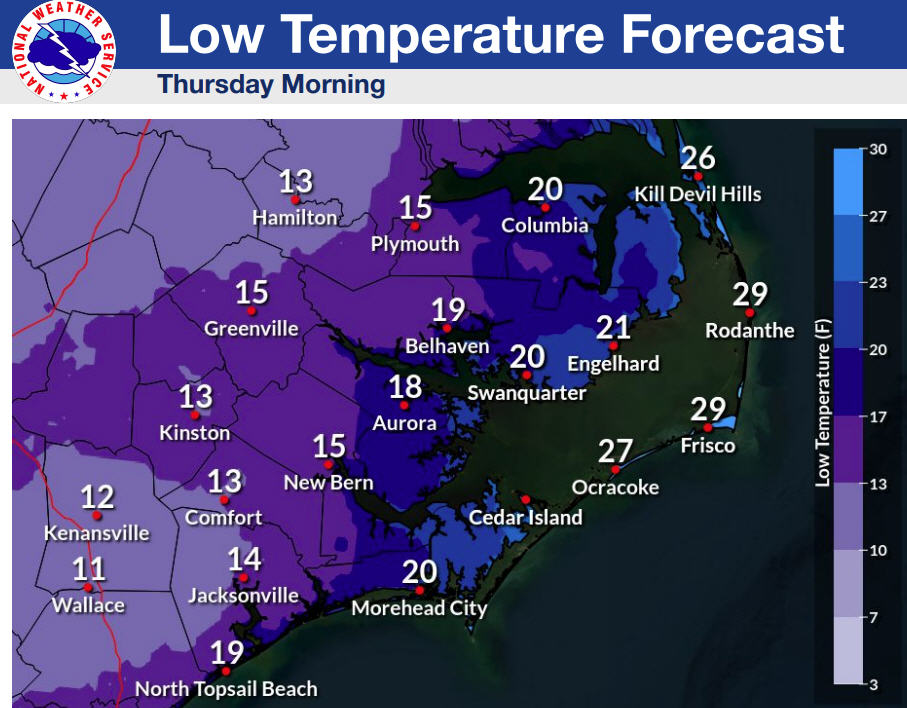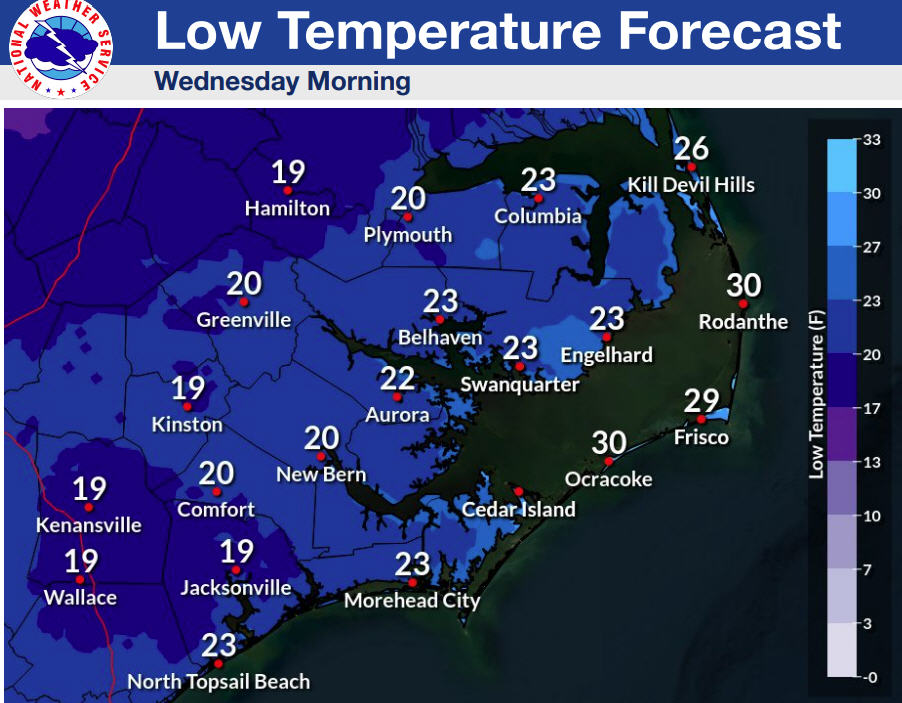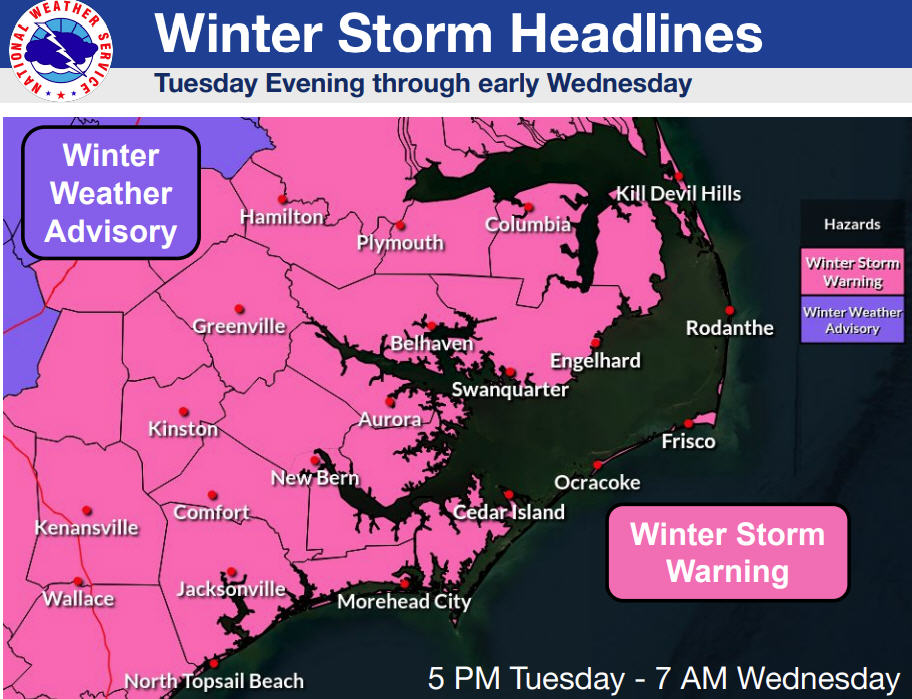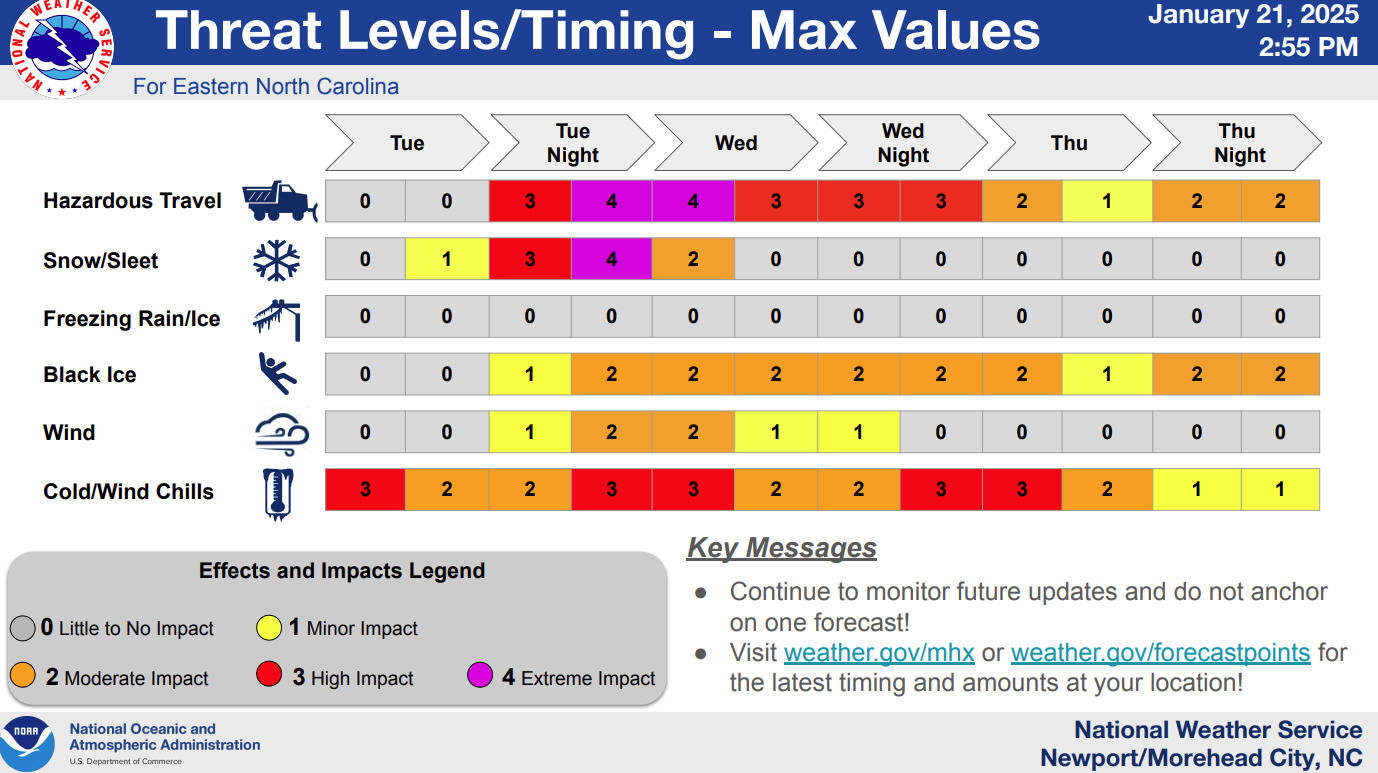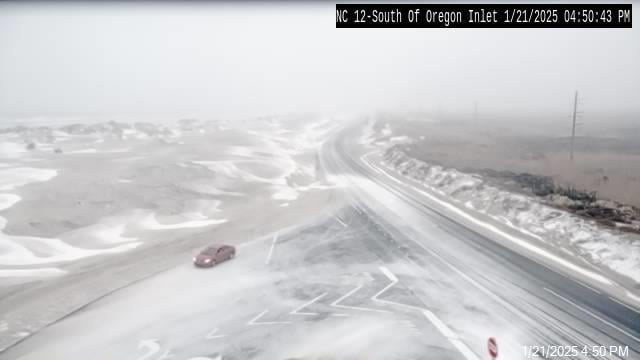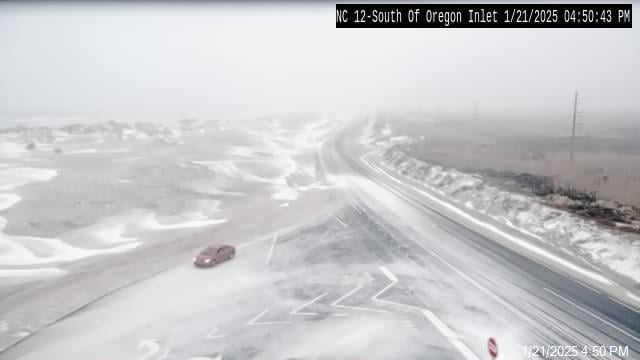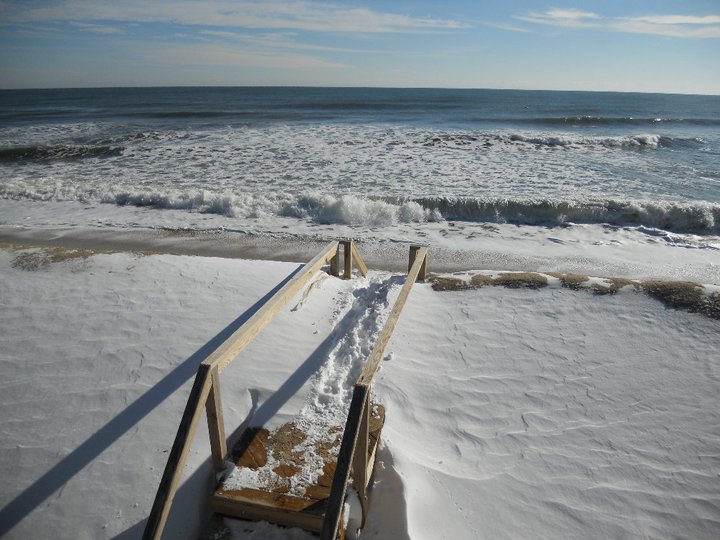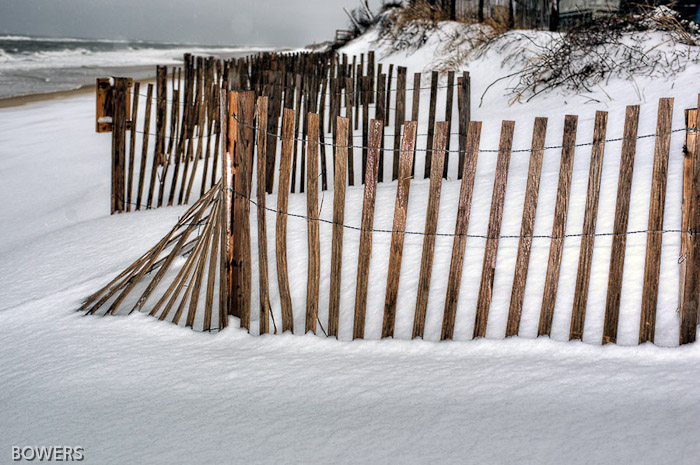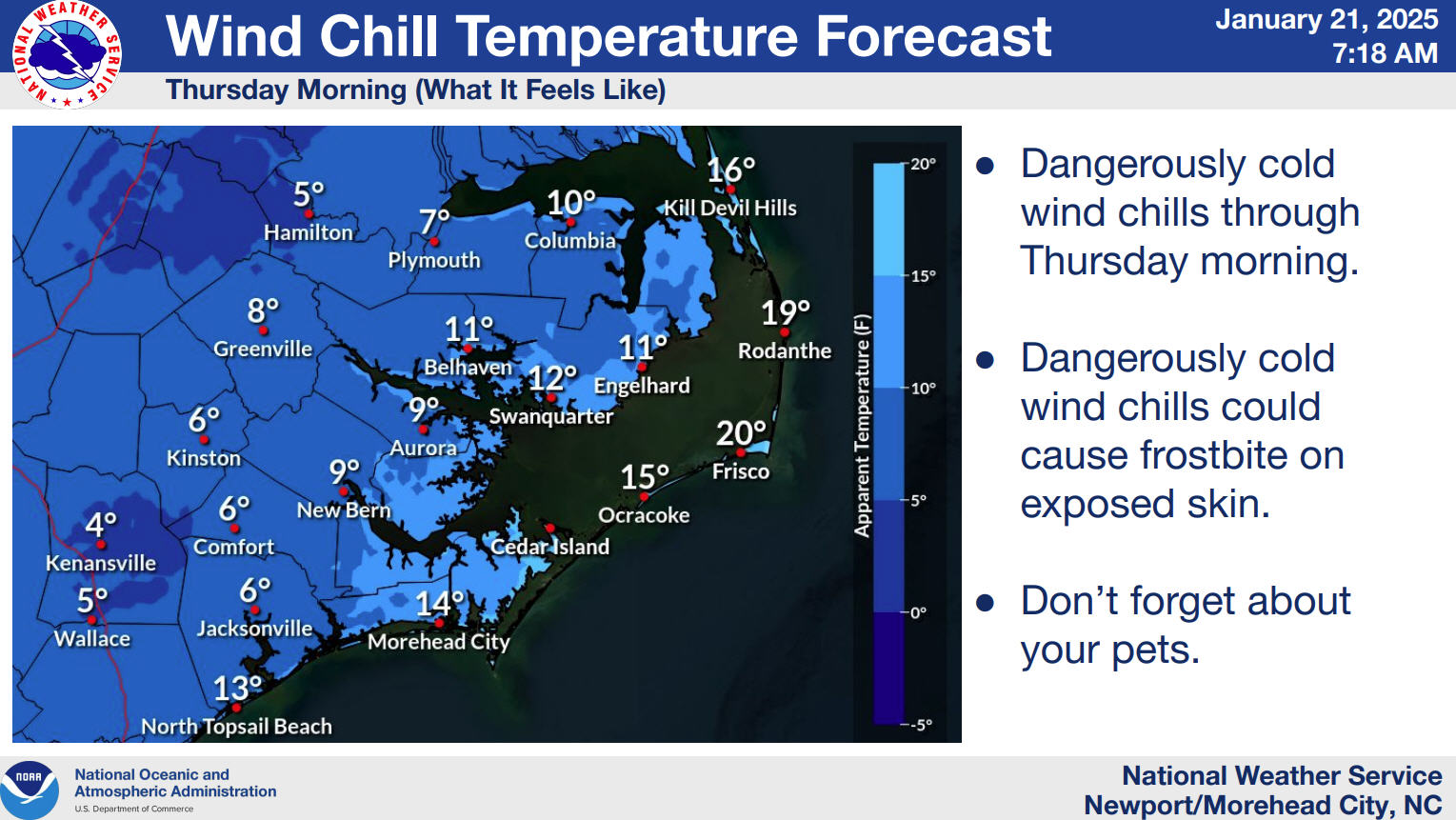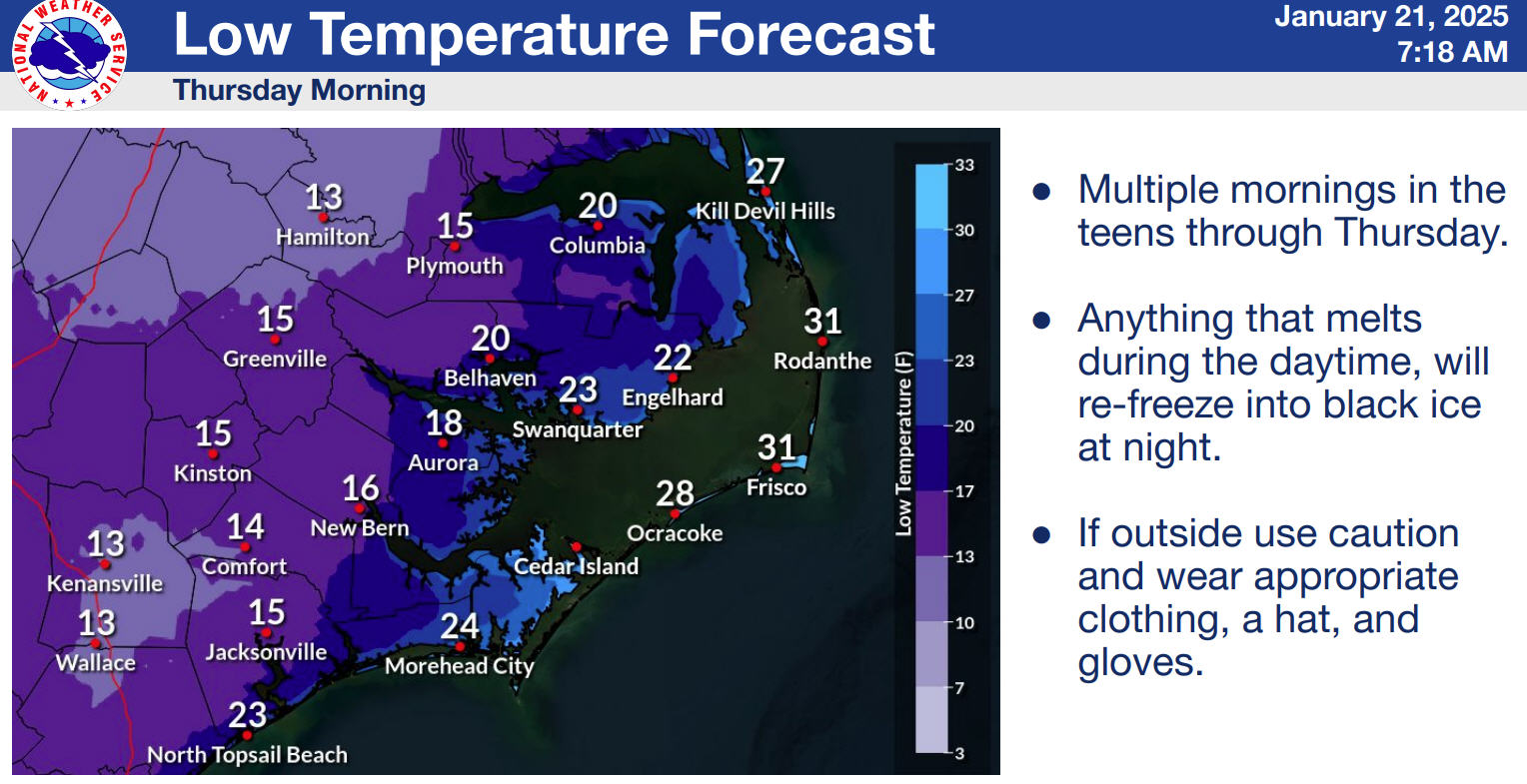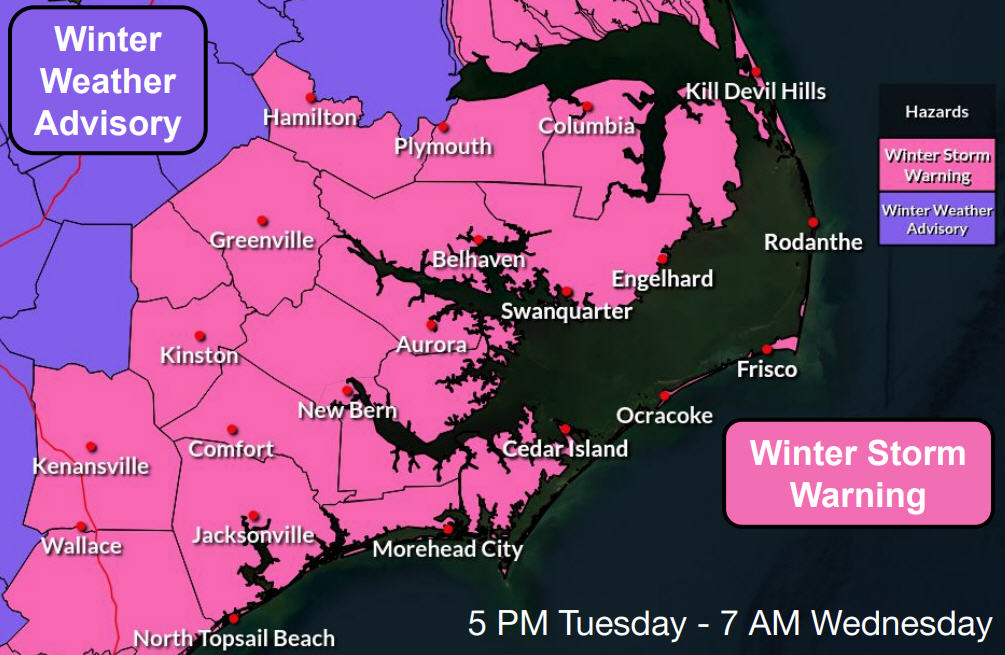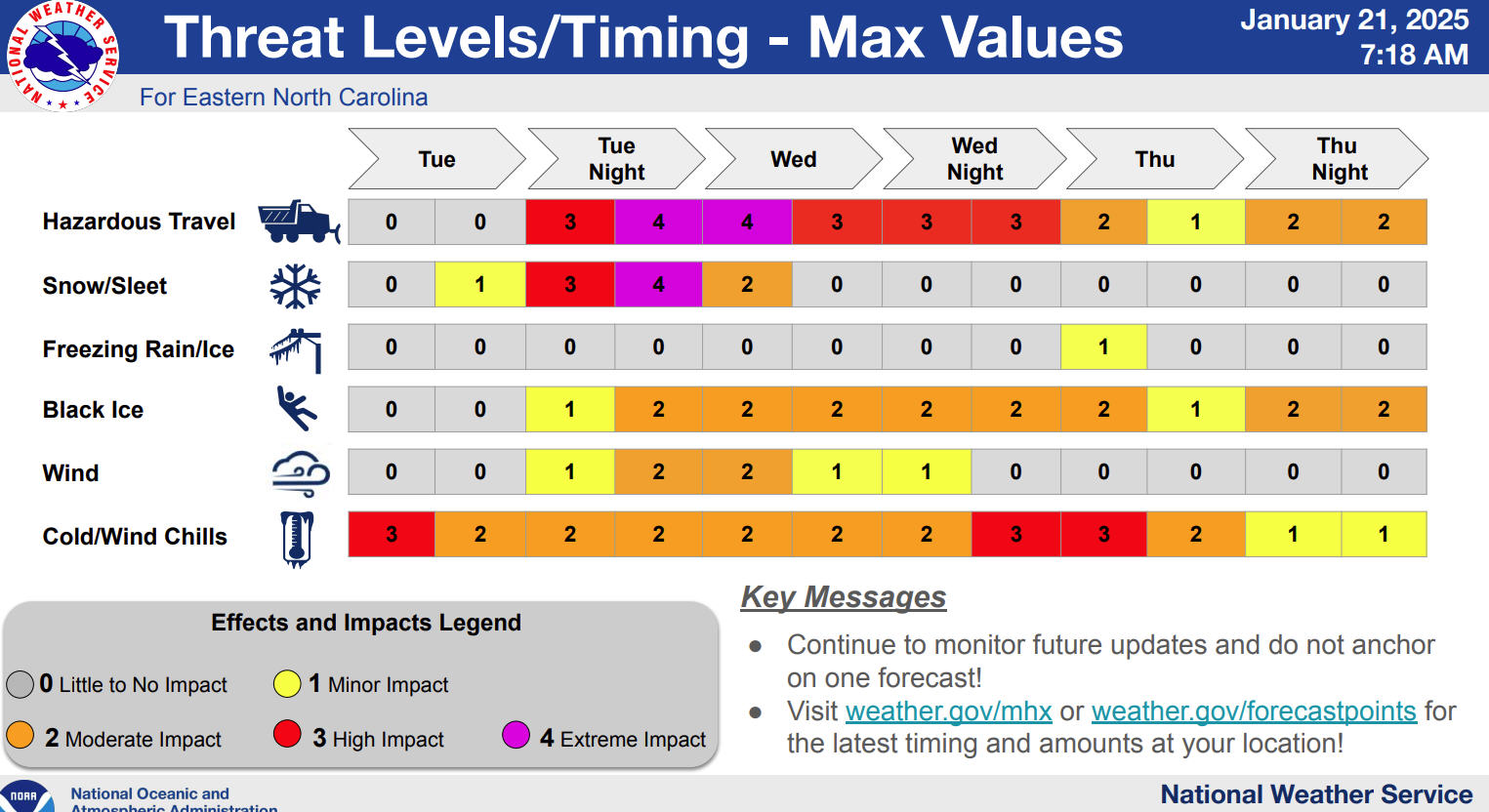Wildfire growing larger in Alligator River National Wildlife Refuge
After two days of extreme fire behavior resulting from low relative humidity, high temperatures, and erratic, gusty winds, the Pains Bay Fire had burned over 15,000 acres by late Saturday night. The fire continues to spread in nearly all directions.
Heavy smoke is being reported on Hatteras Island on Sunday morning, with ashes covering the ground, cars, and screens in the tri-villages. At night, the fire is visible from the tri-villages area.
The Pains Bay Fire is under the jurisdiction of the U.S. Fish and Wildlife Service, as it is burning primarily on refuge lands. Yesterday, since the fire burned onto the Dare Range where the North Carolina Forest Service has suppression responsibility, it has become a joint jurisdictional fire suppression effort. The N.C. Forest Service has played a vital role in the fire suppression effort thus far.
Currently, the fire continues to be managed by a Type 3 team of local firefighters from U.S. Fish and Wildlife Service, N.C. Forest Service, National Park Service, and volunteer fire departments from Stumpy Point, Manns Harbor, Roanoke Island, and Colington.
On Saturday, Incident Commander Mike Quesenberry and the Southern Area Blue Type 1 Team arrived on the Outer Banks to assume management responsibilities on this fire. On Sunday, the Quesenberry team will shadow the local team and get their “feet on the ground.”
Quesenberry has been very complimentary of the suppression efforts thus far on this complicated fire that is burning in very thick, dry pocosin vegetation and under moderate weather conditions. The fire appears to be creating its own extreme weather conditions.
Alligator River National Wildlife Refuge Manager Mike Bryant has prepared an offical delegation of authority that will assign suppression responsibility to the Type 1 Team at 8 a.m. on Monday.
As the Blue Team begins to provide the leadership for the suppression of this fire, refuge staff and the N.C. Forest Service, as well as other cooperators, including the National Park Service, Dare County Emergency Management Office, Dare County Emergency Medical Services, and the Volunteer Fire Departments will continue to serve vital roles in providing local knowledge, experience, and personnel and equipment to the Blue Team.
On Saturday night, firefighters were backfiring the south side of Lake Worth Road in a effort to stop the northern movement of the fire in the area of Stumpy Point.
Residents in Stumpy Point have been contacted by Dare County Emergency Management personnel to collect information that would be important in preparation for an evacuation, in the event it is needed. Special attention is being focused on identifying non-ambulatory people and others who may need assistance if an evacuation were ordered.
On Saturday night, winds are forecast to continue from the east, switching to northwest. At 6 a.m., winds should turn to westerly, then northwesterly around 10 a.m., and more to the north around 4 p.m. Winds are predicted to be light, which would provide favorable conditions for firefighters to work. However, forecast wind conditions have not proven to be dependable with this fire, as the fire appears to influence local weather conditions.
Today, crews will work to widen and improve firebreaks along Jackson, Long Curve, Faircloth, and the Perimeter Road of the Air Force Range in preparation to backburn as the fire approaches.
Other partners assisting with management of the Pains Bay Fire include the North Carolina Department of Transportation, the North Carolina Highway Patrol, and Dare County Sheriff’s Office.
The Pains Bay Fire in the Alligator River National Wildlife Refuge had grown to approximately 3,500 acres by 6 p.m. Friday evening. Rapid spreading of the fire on Friday was attributed to low relative humidity and strong winds. Light rain later in the evening decreased fire behavior and reduced the rate of spread.
Overnight, several engines with crews were monitoring the fire.
Today, crews plan a direct attack on the west flank of the fire using several dozers. On the east flank, the fire is expected to burn toward the sound, so no direct firefighting is planned.
On Saturday or Sunday, the Southern Area Blue Type 1 Team will be transitioning into management of the Pains Bay Fire. This team, which returned home recently from managing multiple fires in West Texas, is under the leadership of Incident Commander Mike Quesenberry.
Alligator River National Wildlife Refuge has many habitat types, all of which are fire adapted. Wildlife populations in these ecosystems have survived wildlifes for generations. The U.S. Fish and Wildlife Service does not anticipate any long-term impact on wildlife populations as a result of this fire.
The refuge and surrounding areas are home to the only wild population of red wolves in the world. Red wolves are classified as an endangered species. David Rabon, Coordinator of the Red Wolf Recovery Team, said the closest pack of red wolves in the current path of the fire occupy a home range on the north side of the Dare County Range. There is currently no immediate threat to these animals.
The closest community to the fire is Stumpy Point on the Dare County mainland, which has a population of 200-pl.us people. If the fire stays on its current path, there is no threat to Stumpy Point. However, firefighters are watching closely and planning ways to protect the community in the event the winds shift to push the fire more in that direction.
The number one priority objective for this fire is the safety of both the public and firefighters. Special focus is placed on keeping local communities safe.
Late last night a 10-mile section of US 264 between Stumpy Point and Engelhard was closed to all traffic due to heavy smoke and active fire on both sides of the road. There was no indication of when the road may reopen.
A wildfire in the area between Pains and Parched Corn bays and south of U.S. 264 on Alligator River National Wildlife Refuge was reported yesterday afternoon. Firefighters from the U. S. Fish and Wildlife Service and the North Carolina Forest Service responded to the fire, which was most likely caused by lightning.
With relative humidity in the mid-30’s and gusty winds from the southwest, the fire is moving northeast toward the Dare Range.
Early this morning, Refuge Manager Mike Bryant described the fire as being approximately 225 acres.
“By setting some backfires, we are attempting to hold the fire south of US 264 and between the canals that come off Pains and Parched Corn bays, which would keep it at around, 2800 acres,” he said.
At that point, the major concern was smoke on U.S. 264.
But, since this morning’s evaluation, the fire has spread considerably, due to dry fuel conditions and 17-25 mph southwest winds.
Shortly after lunch, the fire jumped the canal between Parched Corn Bay and U.S. 264 and continued to spread to the northeast on the east side of U.S. 264. It also jumped U.S. 264 and continued to burn toward the Dare Range.
“The area north of U.S. 264 is of particular concern for several reasons,” commented Bryant. “Between the refuge and the range, there’s a large compartment with no roads. That makes great wildlife habitat, but it makes it difficult to fight fires. This area also has some areas of very deep peat deposits.”
At of this afternoon, Fire Management Officer Tom Crews is in the process of ordering an Incident Management Team through the Southern Area Coordination Center to manage this fire. These teams are specially trained and have worked together to fight fires and handle other incidents, such as hurricane response.
At 2:30 pm today, the fire had grown to approximately 2,000 acres. At this point, U.S. 264 is closed; however, it is expected to reopen today. Those who must drive on U.S. 264 are advised to use extreme caution and be aware that firefighters may be coming and going from the highway.
At this point, there are no private properties, homes, or other structures in immediate danger from the fire. The wildlife in eastern North Carolina are adapted to wildfires and should not suffer long-term effects from this fire.
Subject
Name
(required, will not be published)
(required, will not be published)
City :
State :
Your Comments:
May be posted on the Letters to the Editor page at the discretion of the editor.
May be posted on the Letters to the Editor page at the discretion of the editor.
May be posted on the Letters to the Editor page at the discretion of the editor.
May be posted on the Letters to the Editor page at the discretion of the editor.





